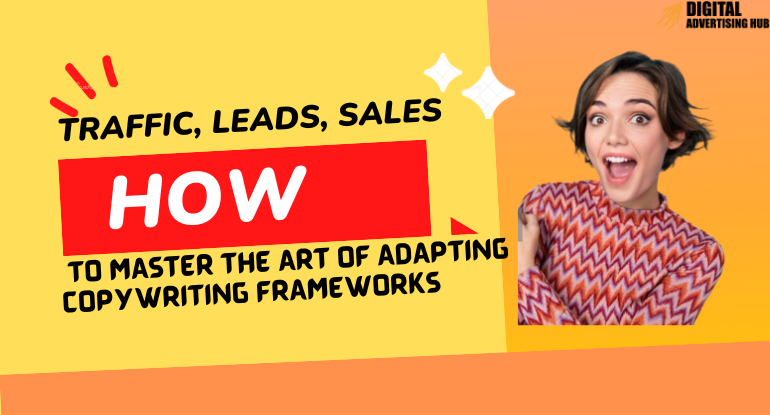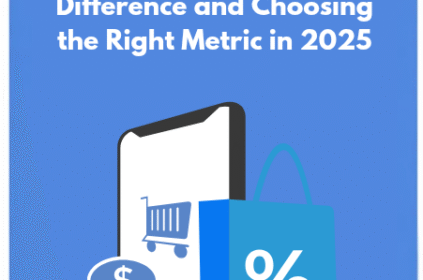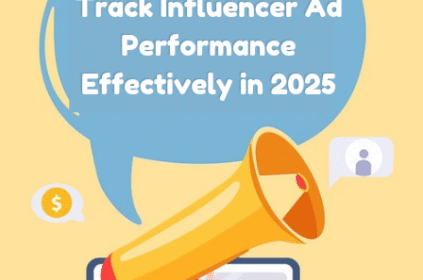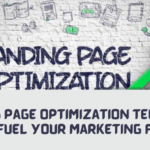Do you ever feel like your ad copy isn’t delivering the results you expect, despite your best efforts? Perhaps you’re experiencing low landing page traffic, or struggling to convert visitors into leads or sales. This is a common challenge faced by many digital marketers.
The truth is, generic copywriting simply doesn’t achieve optimal results. What if you could tailor your message to achieve specific marketing goals? Imagine crafting copy that drives significant website traffic, converts visitors into high-quality leads, and significantly increases your conversions.
This comprehensive blog article is your guide to unlocking this potential. We’ll explore the art of adapting proven copywriting frameworks to achieve specific objectives, transforming them from generic roadmaps into powerful tools that deliver the results you crave.
Popular Copywriting Frameworks (Review)
Before we dive into the exciting world of framework adaptation, let’s take a quick refresher on some of the most popular copywriting frameworks out there. These trusty companions will form the foundation for our goal-oriented tweaks.
#1. Problem-Agitate-Solution (PAS)
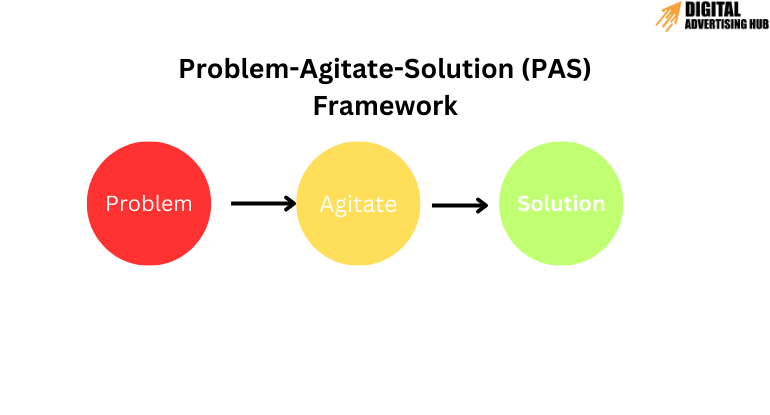
This classic copywriting framework starts by identifying a pain point your audience faces (Problem), then intensifies the discomfort to make them crave a solution (Agitate), before finally presenting your product or service as the heroic answer (Solution).
#2. Before-After-Bridge (BAB)

This copywriting framework paints a vivid picture by contrasting the “Before” state (where your audience currently struggles) with the desired “After” state your product offers (a happier, more successful version of themselves). The “Bridge” then explains how your product or service helps them achieve this transformation.
#3. Features-Advantages-Benefits (FAB)
This copywriting framework focuses on the technical aspects of your offering (Features), then translates those features into tangible advantages that solve customer problems. Finally, it highlights the emotional benefits users experience by using your product, creating a compelling value proposition.
Study more about the 6 copywriting frameworks and how to choose effectively for your campaigns in our previous article.
By understanding the core elements and structure of these copywriting frameworks, you’ll be well-equipped to adapt them for achieving specific marketing goals in the next section.
How to Tailor Frameworks for Specific Goals
Now that we’ve reviewed our trusty copywriting frameworks, let’s unlock their true power by tailoring them to achieve specific marketing goals. Here’s how these frameworks can be adapted to drive landing page traffic, generate leads, and skyrocket conversions:

#1. Increased Landing Page Traffic
Consider a landing page experiencing low traffic, with visitor engagement resembling a deserted landscape. Here’s how to adapt frameworks to grab attention and drive traffic:
- Attention Economy Framework (Adaptation): This copywriting framework capitalizes on the limited attention span of online users. Adapt it by crafting headline-grabbing headlines that pique curiosity and use scarcity tactics to create a sense of urgency.
For example, instead of a bland “Learn More About Our Services,” use a headline like “Uncover the Secret to 10x Your Website Traffic (Limited Spots Available!)“.
- PAS Framework (Adaptation): While the classic PAS focuses on internal problems, use it here to address the external problem of “information overload.” Highlight the difficulty of finding valuable content online, then position your website as the trusted oasis offering solutions and insights users desperately crave.
Additionally, you will be glad to study and apply the best 6 landing page copywriting tips.
#2. Lead Generation
Turning website visitors into leads is the lifeblood of many businesses. Here’s how to adapt frameworks to capture valuable leads:
- Email Opt-in Framework (Adaptation): This copywriting framework is specifically designed to encourage email signups. Adapt the classic “Free eBook in Exchange for Email” by offering targeted resources that address specific pain points.
Highlight the exclusive value users gain by subscribing and showcase testimonials from satisfied subscribers.
- FAB Framework (Adaptation): Shift the focus of FAB from general benefits to emphasizing the benefits of becoming a lead. Promote the exclusive content, discounts, or early access to information users receive by providing their email address. Showcase the advantages of being part of your email community.
#3. Higher Conversions
Conversions are where the rubber meets the road – the point where website visitors take the desired action, be it a purchase, signup, or download. Let’s see how we can adapt frameworks to maximize conversions:
- USP Framework (Adaptation): This copywriting framework focuses on a product’s Unique Selling Proposition (USP). Adapt it by identifying the key differentiator that sets your offering apart from competitors.
Highlight this USP throughout your copy, emphasizing how it solves user problems in a way no other option can.
- Before-After-Bridge (Adaptation): Instead of focusing on a general “better life” after using your product, use BAB to showcase the specific conversion outcome you desire.
For example, if you want users to download a whitepaper, show the “Before” state of being overwhelmed with information and the “After” state of having a clear roadmap thanks to your whitepaper.
Remember, these are just a few examples. The key lies in understanding the core elements of each framework and creatively adapting them to match your specific goals.
8 Additional Tips for Tailoring Frameworks
Here are some additional tips to help you master the art of tailoring copywriting frameworks for maximum impact:
#1. Target Audience Matters: Always consider your ideal customer and their specific needs when adapting a framework. What problems do they face? What language resonates with them?
#2. Maintain Brand Voice: While adapting copywriting frameworks, ensure your ad copy retains your brand’s unique voice and personality. Don’t stray so far from your established tone that your audience becomes confused.
#3. Track and Analyze: The beauty of online marketing is the ability to measure results. Once you’ve implemented your tailored frameworks, track key metrics (e.g., website traffic, lead generation, conversions) to see what’s working and what needs further refinement.
#4. A/B Testing is Your Friend: Don’t be afraid to experiment! Use A/B testing to compare different adaptations of the same framework and see which version resonates best with your audience. This data-driven approach helps you continuously optimize your copywriting for better results.
#5. Focus on Benefits, Not Features: People don’t care about features; they care about the benefits those features provide. When adapting frameworks, ensure your copy emphasizes how your product or service solves user problems and improves their lives.
#6. Embrace Power Words: Strategic use of power words can significantly impact the effectiveness of your copywriting. Weave in words that evoke emotions, trigger urgency, and create a sense of value when adapting frameworks for specific goals.
#7. Keep it Clear and Concise: Avoid jargon and overly complex sentences. Frameworks should be a springboard, not a cage for your creativity. Strive for clear, concise, and easy-to-understand copy that resonates with your target audience.
#8. Integrate with Design: Remember, copywriting doesn’t exist in a vacuum. Consider how your adapted framework will integrate with the overall design of your website or landing page. Use visuals, calls to action, and white space strategically to enhance the impact of your tailored copy.
By following these tips, you’ll be well on your way to transforming generic copywriting frameworks into powerful tools that deliver the results you crave.
7 Common Copywriting Mistakes and How to Avoid Them
Even the most enthusiastic digital marketer can fall prey to common copywriting mistakes. Here are 7 pitfalls to avoid, and how applying frameworks can be your copywriting superhero:
#1. Generic Messaging: “We’re the best!” doesn’t tell your audience anything unique. Frameworks (like USP): By focusing on your Unique Selling Proposition, you craft messages that highlight what sets you apart, attracting the right customers.
#2. Excessive Technical Language: Confusing your audience with industry lingo is a surefire way to lose their attention. Frameworks (like FAB): By emphasizing Features, Advantages, and Benefits in clear, concise language, you connect with your audience on a human level.
#3. Feature Dumping: Listing features without explaining their value is a missed opportunity. Frameworks (like PAS): The Problem-Agitate-Solution framework helps you showcase features as solutions to your audience’s pain points, making your copy more impactful.
#4. Lack of Focus: Trying to be everything to everyone dilutes your message. Every framework has a specific goal (increased traffic, lead generation, conversions). Using them ensures your copy is laser-focused on achieving a clear objective.
#5. Weak Calls to Action (CTAs): A wishy-washy CTA leaves your audience unsure what to do next. Strong CTAs are essential in every framework. They tell users exactly what action you want them to take, driving results.
#6. Ignoring the Customer Journey: Your copy should speak to your audience at different stages of their buying journey. Frameworks (Before-After-Bridge): This framework allows you to tailor your message to resonate with users considering a purchase, highlighting the “Before” state of their problem and the “After” state of satisfaction with your solution.
#7. Neglecting Storytelling: People connect with stories. Dry, factual copy fails to engage. While not every framework is inherently a story, many can be adapted to incorporate storytelling elements.
For example, the PAS framework allows you to weave a narrative around a problem, creating a more captivating message.
By understanding these common pitfalls and leveraging the power of copywriting frameworks, you can craft clear, compelling copy that resonates with your audience and achieves your marketing goals.
Conclusion
Remember, copywriting frameworks are powerful tools, but they’re not magic wands. The key lies in understanding their core principles and then creatively adapting them to fit your specific marketing objectives.
In this post, we explored how to tailor frameworks to drive website traffic, generate leads, and skyrocket conversions. We also considered common copywriting mistakes and how frameworks can help you avoid them.
So, the next time you sit down to craft compelling copy, don’t just rely on generic messaging or feature dumping. Choose a framework, tailor it to your goal, and watch your copywriting transform from good to great!
Now, go forth and conquer the world of copywriting with the power of adaptation at your fingertips!
Would you like to learn more about copywriting? The following resources are your best guide:
- 20 Copywriting Strategies You Need To Know
- 10 Effective Copywriting Examples
- Copywriting Process in Advertising For Advertisers

